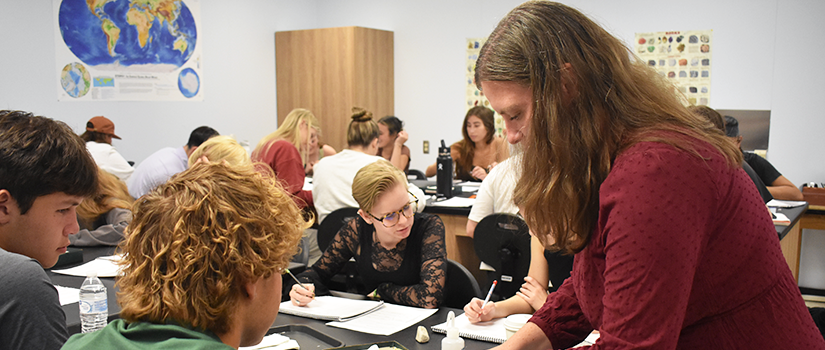What Is Classroom Observation?
Classroom observation involves a colleague or CTE staff member visiting a class session to provide constructive feedback. It can also be used for self-reflection. Whether conducted by a peer or with support from the Center for Teaching Excellence (CTE), the purpose is to foster continuous improvement. Instructors may also choose to follow up with a CTE consultation for specific strategies aligned with their development goals.
The Classroom Observation Process
The CTE's classroom observation process is flexible and supportive, designed to guide both instructors and observers without being prescriptive. It includes three main stages:
- Pre-Observation
Before the observation, the instructor and observer meet to clarify goals, expectations, and the context of the course. This may include reviewing materials such as the syllabus, Blackboard site, or assignments. This conversation builds trust and sets the foundation for a meaningful observation. - Observation
During the observation, the focus is on the instructor’s teaching in action, with attention to both strengths and areas for growth. - Post-Observation
After the class, the instructor and observer engage in a collaborative discussion. This debrief is essential for processing feedback and planning actionable next steps.
Observation Feedback
This process is based on the USC Core Principles for Quality Teaching and the Critical Teaching Behaviors (CTB). This includes evidence-based teaching strategies and a focus on observable practices. The feedback form is not a checklist of requirements but a tool to prompt reflective discussion. Not all strategies are expected to be demonstrated in one session.
The CTE’s Classroom Observation Process and Feedback Form includes four key areas of teaching behaviors for observation:
- Communication
What are the ways in which the instructor communicates tasks, expectations, and information to students? - Content
What are the ways in which the instructor uses course content presentation to advance active learning and connections? - Lesson Planning and Structure
What are the ways in which the instructor helps students to easily follow along and participate meaningfully? - Active Student Engagement
What are the ways in which the instructor creates and leads opportunities for participation and active student engagement?
Get Started!
- Contact the CTE to request an observation!
- Partner with a colleague to use the Classroom Observation Process and Feedback Form.
- Use the Classroom Observation Process and Feedback Form to conduct a self-assessment and reflection.
Adapted from:
- Barbeau, L. and Cornejo Happel, C. (2023). Critical teaching behaviors: Defining, documenting, and discussing good teaching.
- Chickering, A. W., & Gamson, Z. F. (1987). Seven principles for good practice in undergraduate education. AAHE Bulletin, 3–7.
- "Peer Review & Evaluation." University of Southern California Center for Excellence in Teaching.
- University of South Carolina Core Principles for Quality Teaching
